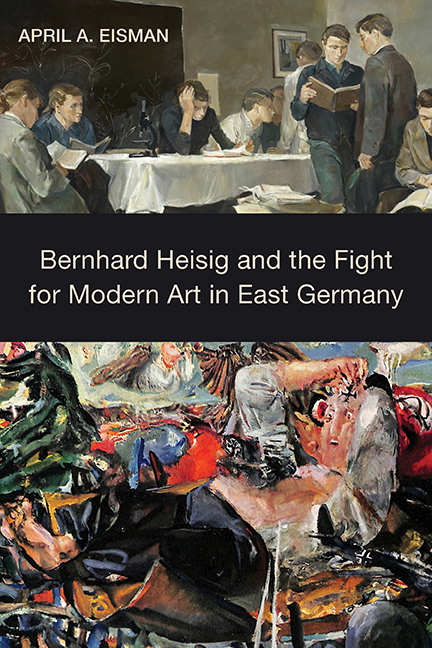Book contents
- Frontmatter
- Contents
- List of Illustrations
- Acknowledgments
- List of Abbreviations
- Introduction: Why Heisig Matters
- 1 From the Nazi Past to the Cold War Present
- 2 Art for an Educated Nation
- 3 Against the Wall: Murals, Modern Art, and Controversy
- 4 The Contentious Emergence of the “Leipzig School”
- 5 Portraying Workers and Revolutionaries
- Conclusion: The Quintessential German Artist
- Notes
- Bibliography
- Index
5 - Portraying Workers and Revolutionaries
Published online by Cambridge University Press: 14 June 2019
- Frontmatter
- Contents
- List of Illustrations
- Acknowledgments
- List of Abbreviations
- Introduction: Why Heisig Matters
- 1 From the Nazi Past to the Cold War Present
- 2 Art for an Educated Nation
- 3 Against the Wall: Murals, Modern Art, and Controversy
- 4 The Contentious Emergence of the “Leipzig School”
- 5 Portraying Workers and Revolutionaries
- Conclusion: The Quintessential German Artist
- Notes
- Bibliography
- Index
Summary
Less than four years after the controversial Seventh District Art Exhibition in Leipzig, Heisig created another painting that would become a center of debate, Die Brigade (The Brigade, 1968/69, fig. 5.1). In loose, expressive brushstrokes, it depicts a group of workers on a construction site; the figure in the middle meets our gaze with a smile and gives us a thumbs-up. Little known in current scholarship, this painting—which is reproduced here for the first time—marks the first of a number of portraits Heisig created between 1968 and 1971 that focused on figures of particular importance in East Germany. Others include Lenin, Lenin and Doubting Timofej, and Brigadier II. Indeed, these are three of the most highly praised portraits in Heisig's oeuvre and contributed directly to Lothar Lang's statement in 1973 that Heisig was one of East Germany's “best portraitists.”
When Heisig created these paintings, he was a freelance artist, having left his teaching position at the Leipzig Academy in August 1968. Like in the early 1950s after he had dropped out of art school in the wake of the Formalism Debates, Heisig relied solely on his artwork to earn money and continued to do so until 1976 when he returned to the Leipzig Academy as director and professor. These years as a freelance artist follow immediately in the wake of his transition—in the first half of the 1960s—from being primarily a graphic artist to being primarily a painter.
Years later, Heisig explained his departure from the Leipzig Academy in 1968 as having been “encouraged by some circumstances that spoiled the teaching profession for me at the time.” This was presumably a reference to the Third University Reform, which went into effect that year and increased the party's influence within universities. It marked a dogmatic turn in East German higher education that led several professors to leave teaching. Long the focus of criticism from individual members of the local party, Heisig's teaching—and, in particular, the pessimism found in many of his students’ work—had come under increasing fire in a number of reports leading up to the reform.
- Type
- Chapter
- Information
- Bernhard Heisig and the Fight for Modern Art in East Germany , pp. 132 - 160Publisher: Boydell & BrewerPrint publication year: 2018

